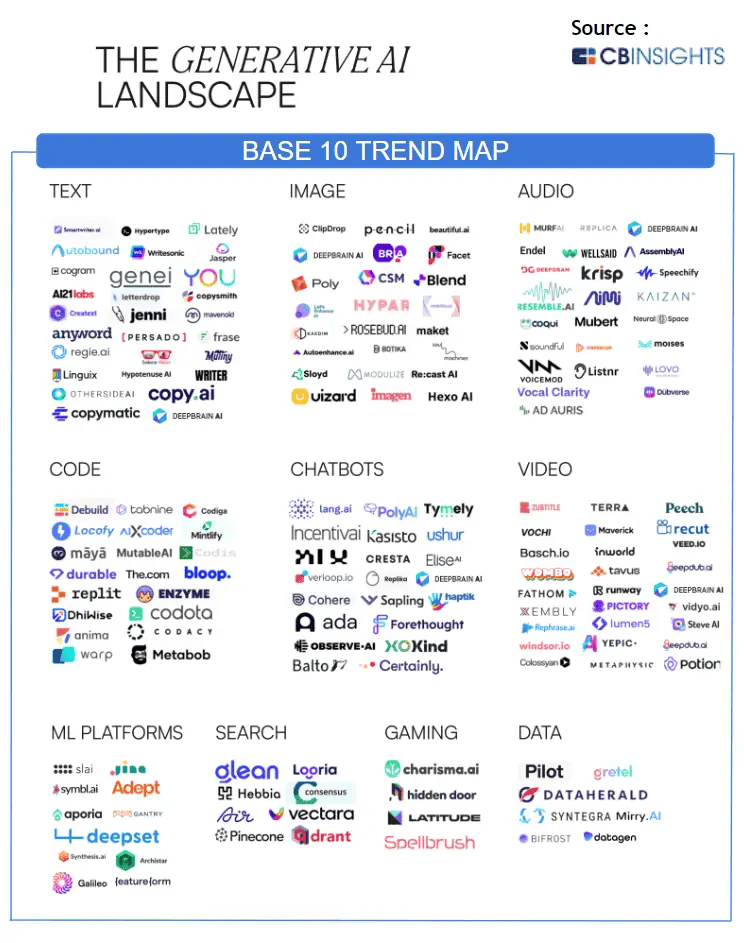Artificial Intelligence (AI) is changing the game in countless industries, and education is no exception. Remember those stiff, traditional classrooms we all grew up in? They’re evolving. Modern classrooms are more dynamic and engaging, thanks to technology.
DeepBrain AI is leading this transformation by offering innovative tools to enhance student engagement. Think of it as a classroom assistant who’s always ready to help, bringing fresh and interactive ways to learn.
The importance of engaging students can’t be overstated. When students are truly engaged, they’re more likely to retain information, develop critical thinking skills, and enjoy the learning process. AI-powered tools can make this happen by personalizing learning experiences to fit each student’s unique needs.

Meet DeepBrain AI: Revolutionizing Student Engagement
DeepBrain AI is like your new best friend in the classroom. It’s packed with features designed to make learning more interactive and fun. From creating engaging video lessons to offering real-time feedback, it’s a game-changer.
One of the standout features is its ability to enhance learning experiences. Imagine having a tool that tailors lessons to each student’s pace and style. Whether it’s generating quizzes on the fly or crafting interactive content, DeepBrain AI makes the teacher’s job easier while keeping students hooked.
But don’t just take my word for it. Many schools and educators are already seeing the benefits. Success stories highlight improved student performance and increased motivation. Imagine a classroom where students are excited to learn and participate. That’s the promise of DeepBrain AI.
Interactive Video Content: The Future of Learning
Education is stepping into the future with interactive video content, and DeepBrain AI is at the forefront of this evolution. These videos aren’t your run-of-the-mill, sit-and-watch-a-lecture type. Think engaging quizzes, instant feedback, and interactive segments that get students actively participating.
Interactive video content offers multiple benefits. It transforms passive learning into an active experience, making it easier for students to grasp complex concepts. Instead of just watching, students get to engage directly with the material, increasing retention and understanding.
DeepBrain AI’s video magic shines here. Imagine lessons that adapt in real-time based on student responses. You show a video on ecosystems, and as students answer questions, the video branches off to offer deeper insights or simplify concepts where needed. It’s a tailored learning experience without the need for extra prep on your part.
Don’t just take my word for it. Real-world feedback from classrooms using these interactive videos is overwhelmingly positive. Teachers report higher student engagement, better comprehension, and a noticeable uptick in enthusiasm. Students aren’t merely passive listeners—they become active participants in their education journey.
Personalized Learning with AI: Catering to Individual Needs
AI has the unique ability to personalize learning experiences for every student. Gone are the days of one-size-fits-all education. With DeepBrain AI, lessons are tailored to fit each student’s pace, learning style, and interests.
This personalized approach allows for adapting content to various learning styles, whether a student is a visual learner, prefers hands-on activities, or excels through auditory learning. DeepBrain AI analyzes students’ interactions and adjusts accordingly, ensuring each student gets the attention they need.
Imagine a classroom where no student is left behind. With real-time adjustments based on individual performance, students who grasp concepts quickly can move ahead, while those who need more time get the support they need. It’s like having a personal tutor for each student but without the added cost.
Case studies show significant improvements where personalized learning has been implemented. Schools report higher test scores, increased student satisfaction, and a more inclusive learning environment. Personalized learning not only boosts academic performance but also fosters a love for learning.
Creating Immersive Classroom Experiences
Technology is swirling around our classrooms, offering possibilities we’ve only dreamt of. Combining AI with Virtual Reality (VR) creates an immersive learning landscape. Imagine a history lesson not told through textbooks but experienced through virtual walks in ancient civilizations.
DeepBrain AI makes such immersive experiences a reality. Students don’t just study; they explore, interact, and engage in ways that traditional methods can’t match. Whether it’s a VR field trip to the Amazon forest or a 3D tour of the human heart, these lessons are memorable and effective.
Examples abound of this immersive approach in action. Biology students dissect digital frogs without the mess, geography classes explore the Great Barrier Reef up close, and literature students step into Shakespeare’s Globe Theatre. These experiences enrich understanding and create lasting impressions.
The impact on motivation and performance is clear. Students who are part of such immersive lessons often show higher enthusiasm and better engagement. They don’t just pass tests; they grasp concepts deeply and remember them longer. Immersion transforms learning from a chore to an adventure.
Streamlining Administrative Tasks with AI
Educators often find themselves buried under a heap of administrative tasks. Grading, attendance, lesson planning—it all adds up. But AI, and specifically DeepBrain AI, can help lighten this load.
One way AI helps is by automating grading. Multiple-choice tests, quizzes, and even some essay assessments can be evaluated quickly and accurately. This not only speeds up the process but also ensures impartial grading. Teachers get more time to focus on what truly matters: teaching.
Attendance is another area where AI shines. Smart systems can track attendance automatically, reducing paperwork and ensuring accurate records. No more roll-calls at the start of every class, freeing up time for actual learning activities.
Lesson planning, often a time-consuming task, becomes much easier with DeepBrain AI. It can suggest customized lesson plans based on curriculum standards, student performance, and even current events. Educators can tweak these recommendations to fit their style, but the heavy lifting is done by the AI.
Efficiency and productivity gains with these AI-driven tools are undeniable. Teachers save time, reduce stress, and can dedicate more energy to engaging with their students. Streamlining administrative tasks frees educators to do what they love most: inspiring young minds.
Encouraging Collaboration and Critical Thinking
AI tools are turning classrooms into collaborative hubs where students work together seamlessly. DeepBrain AI offers various features that promote teamwork and critical thinking skills.
Group projects can now be supercharged with AI. Imagine students working on a science experiment where AI helps them analyze data, identify patterns, and draw conclusions. It’s not just about gathering information; it’s about understanding it collaboratively.
AI-driven discussion boards and virtual meeting tools keep students connected, even when they’re apart. These platforms facilitate group discussions, brainstorming sessions, and peer-to-peer learning. It’s like having a digital classroom that’s always open.
Promoting a culture of critical thinking becomes easier with AI. Tools like DeepBrain AI can pose challenging questions, offer different perspectives, and encourage students to think critically about their responses. This kind of interaction fosters deeper understanding and hones problem-solving skills.
Examples of AI-driven collaborative projects are popping up in classrooms everywhere. Whether it’s a group of students developing a community service app or collaborating on a research paper, AI makes the process smoother and more efficient. Students learn to work together, think critically, and produce high-quality work.
Addressing Challenges and Ethical Considerations
Implementing AI in classrooms isn’t all smooth sailing. There are challenges and ethical considerations to keep in mind. One of the primary challenges is ensuring that educators and students are adequately trained to use these new tools. Without proper training, the potential benefits of AI can easily be missed.
Ethical considerations are another big aspect. Data privacy is paramount, especially when dealing with young students. Schools need robust measures to protect student information and use data responsibly. Transparency about what data is being collected and how it’s used is essential for building trust among students, parents, and educators.
Then there’s the issue of bias. AI systems are only as good as the data they’re trained on. If this data is biased, the outcomes can be too. Ensuring that AI tools are developed and tested to be as unbiased as possible is crucial.
Strategies for overcoming these obstacles include ongoing professional development for educators and involving all stakeholders in the decision-making process. This ensures that everyone is on board and understands the technology’s benefits and limitations.
Addressing these challenges head-on will pave the way for a smoother integration of AI in education and maximize its positive impact. It’s not just about having the technology but using it responsibly and effectively for the benefit of all students.

The Future of Education with AI
AI is revolutionizing education by making learning more engaging and personalized. DeepBrain AI stands out as a key player in this transformation, offering innovative tools that take interactive learning and administrative efficiency to the next level.
AI’s benefits are multi-faceted, from creating immersive classroom experiences to streamlining admin tasks. The personalized approach it brings caters to individual learning styles, ensuring no student is left behind. Collaboration and critical thinking are boosted, preparing students for the challenges of the future.
While there are challenges and ethical considerations to address, the potential rewards are immense. Future trends point to an even greater integration of AI in the classroom, with continuous advancements improving its effectiveness.
Educators have a significant opportunity to embrace these innovations and transform their teaching methods. With the right tools and mindset, the future of education looks brighter and more exciting than ever.


